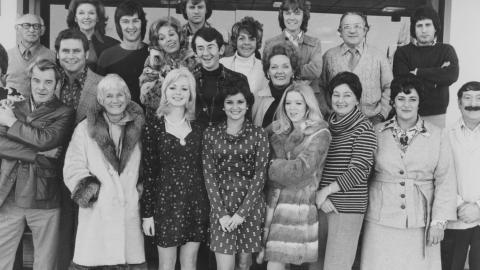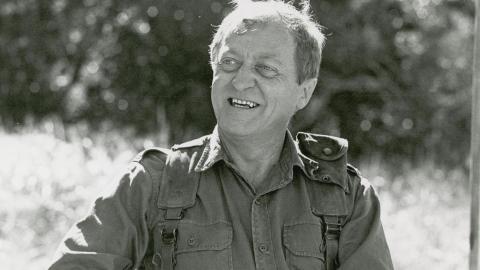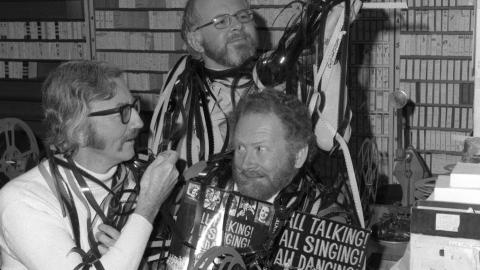
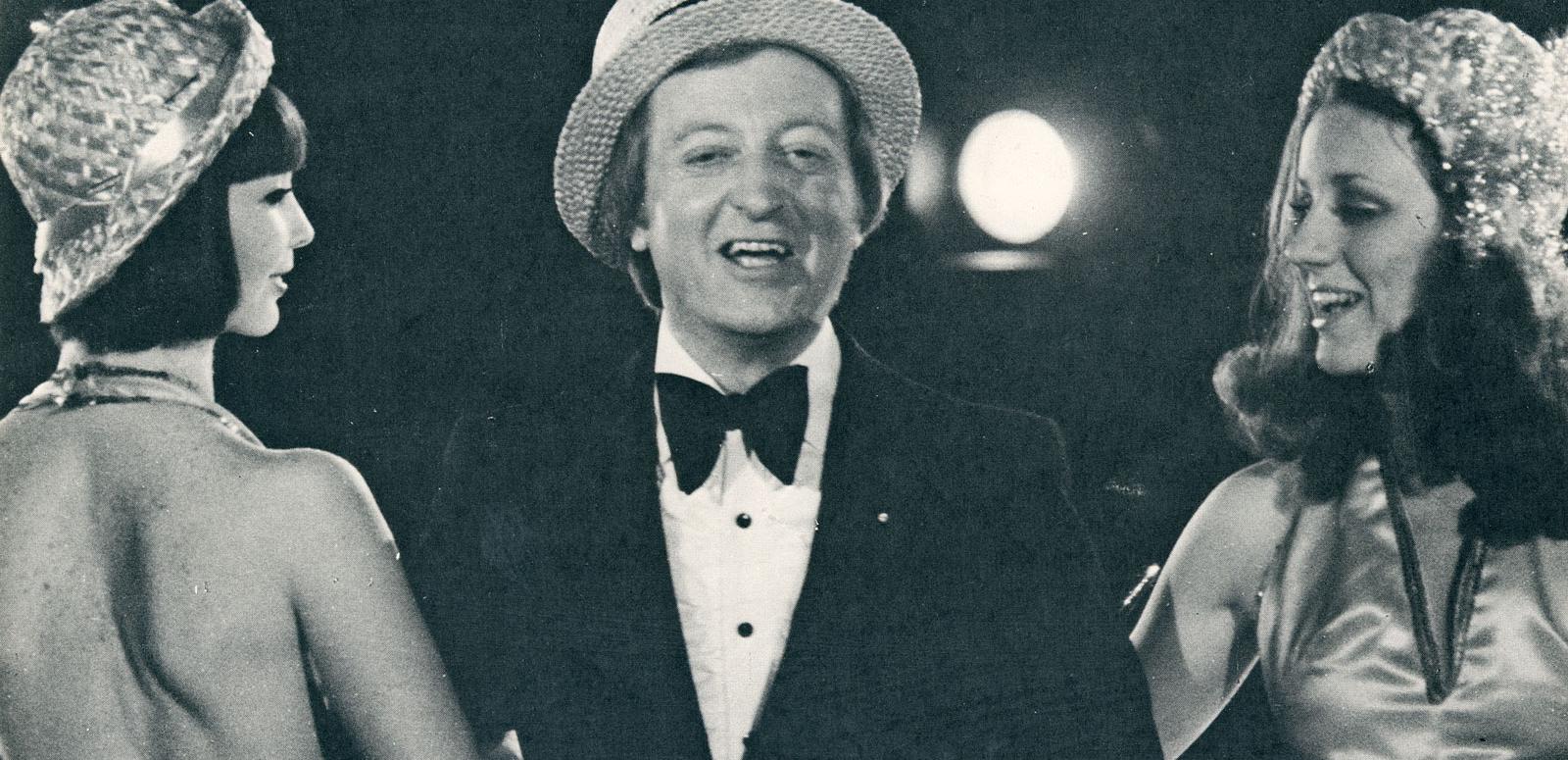
The Box
Out of The Box!
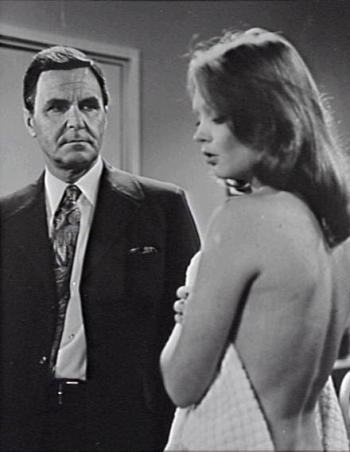
It’s staggering to think that on 11 February 2014 it will be 40 years since one of Australia’s best rating soap operas, The Box (1974-1977), premiered on ATV O in Melbourne.
Following the O-10 Network’s incredible success with Number 96 (Cash- Harmon Productions, 1972-1978), Channel 9 called upon Crawford Productions in 1973 to come up with a rival soap opera. Crawford’s Ian Jones reprised a concept he had written some years before and, with the help of scriptwriter Tom Hegarty, drafted The Dream Makers, set in what was then thought of as the glamorous world of a television channel.
The Nine Network and then the Seven Network were offered and declined The Dream Makers due to its explicit content and thus the series, now known as The Box, was offered and accepted by the 0-10 Network, from 1980 known simply as Network Ten.
Initially shot in black-and-white its first episode was broadcast on 11 February 1974. The 90-minute first episode was then replaced by daily 50-minute episodes. The series switched to colour in late 1974 in readiness for C day on 1 March 1975. Producers aimed for shock, sex and sin. Newspaper advertisements of the time warned viewers ‘to prepare yourself for the hottest and most provocative series on Australian television’.
The Box was broadcast on Channel Ten directly after an episode of Number 96. The Sydney premiere on 12 February earned the highest rating for a series since the 1960s sketch comedy series The Mavis Bramston Show (Seven Network, 1964-1968). TV Week gave it an overwhelmingly positive review when it described the premiere episode as a ‘dazzling feat’ that ‘[…] must rank high on the list of Crawford Productions’ finest achievements […] bosoms, bottoms and deviations apart, the series shows a maturity rarely seen in an Australian production.’ However there were some mixed reactions from viewers, who wrote in saying it was crude, complaining about the number of nude scenes per episode, which they had dutifully counted!
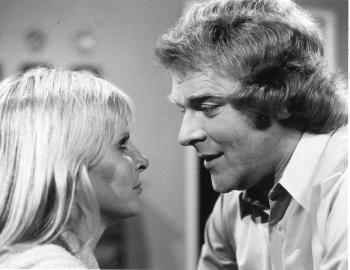
The Box examined the lives of the studio executives, on air personalities and office staff of Channel UCV-12. Storylines involved homosexuality, bisexuality, nudity and scandal and including Australian television’s first lesbian kiss. A gossipy tea lady and head of security also gave the show humour and grounding in the non-showbiz world to which ordinary viewers could relate.
Characters were apparently based on recognisable people in the industry at the time. The owner of UCV-12, Sir Henry Usher (played by Fred Betts), was reputedly inspired by two tycoons: Sir Reginald Ansett and Sir Frank Packer. Writers would encourage speculation on industry parodies by refusing to name names, but at the start of each episode the credits stated: ‘The characters and events depicted in this serial are fictitious!’ – complete with a throbbing exclamation point to highlight the claim.
Rumour has it that Reg Ansett, then the owner of ATV 0 approved the series on the assumption Sir Henry was based on his rival Sir Frank Packer. What is agreed upon is that the tea lady in the series, Mrs Hopkins, known affectionately as Mrs H (Lois Ramsay), was most definitely based on Crawford’s own legendary tea lady, Mrs Carter.
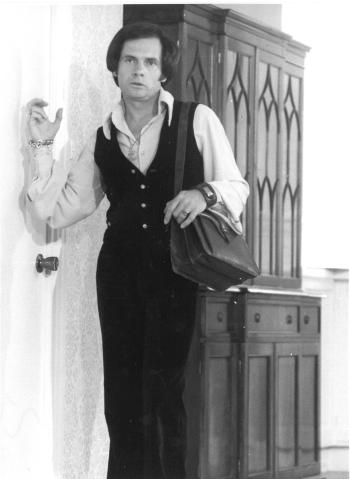
The Box, sometimes clumsy but certainly never boring, had a cast that reads like a who’s who of early Australian television. George Mallaby, a star in Crawford’s popular police drama series Homicide (1964-1976), played the part of Channel 12’s station programmer, Paul Donovan. Belinda Giblin played the role of the gorgeous Kay Webster, secretary to the General Manager Max Knight, played by Barrie Barkla, with whom she was having an affair. Ken James, of Skippy fame, played Tony Wild and the series included first-time TV performances by Tracy Mann as a costume assistant and a very young Noni Hazlehurst. Other regular cast members included Fred Betts, Briony Behets, Graeme Blundell, Margaret Cruickshank, Cul Cullen, Maurie Fields, Jill Forster, Syd Heylen, Monica Maughan, Judy Nunn, Lois Ramsey, Peter Regan, John Stanton and Charles Tingwell, who also occasionally directed.
The series won various accolades for its cast: George Mallaby won the Best Australian Actor Logie Award in 1975 and Paul Karo (pictured left) also won a Logie in 1976 for his portrayal of Lee Whiteman, gay producer of the Channel’s variety show Big Night Out.
Judy Nunn, who played a bisexual reporter, said that ‘looking back it was very close to the bone … it could be taken straight or as a very funny satire. She (Vicki) became an important character for a lot of young women who were just learning about Women’s Lib.’
The Box ranked as the second most popular show in 1974 after Number 96. The series was a new venture for Crawfords, which was heavily invested in the production of police dramas Homicide, Division 4, Matlock Police and Ryan.
Crawfords was always willing to expand production to meet demand, extending The Box to 335 episodes. The production of the series would indeed save the fortunes of Crawfords, as during this period all of their police dramas were cancelled by the networks.
Like its counterpart Number 96, a spin-off feature film was produced in 1975, featuring much of the same cast as the television series, but without the box-office success of the 96 movie. The introduction of colour television in March 1975 meant viewers no longer felt the need to flock to the cinema to see their favourite TV stars in colour.
Declining ratings spelt the end for the series, which wrapped production in April 1977. The final episode was broadcast on 11 October 1977, and included the passing of tea lady Mrs Hopkins who died … in her sleep whilst watching television!
Episodes of The Box are preserved by the NFSA. Learn more about our Television collection.
The National Film and Sound Archive of Australia acknowledges Australia’s Aboriginal and Torres Strait Islander peoples as the Traditional Custodians of the land on which we work and live and gives respect to their Elders both past and present.
